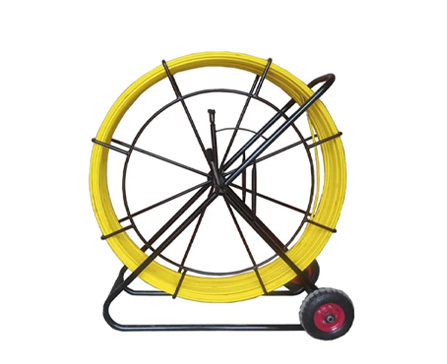
-
 Afrikaans
Afrikaans -
 Albanian
Albanian -
 Amharic
Amharic -
 Arabic
Arabic -
 Armenian
Armenian -
 Azerbaijani
Azerbaijani -
 Basque
Basque -
 Belarusian
Belarusian -
 Bengali
Bengali -
 Bosnian
Bosnian -
 Bulgarian
Bulgarian -
 Catalan
Catalan -
 Cebuano
Cebuano -
 Corsican
Corsican -
 Croatian
Croatian -
 Czech
Czech -
 Danish
Danish -
 Dutch
Dutch -
 English
English -
 Esperanto
Esperanto -
 Estonian
Estonian -
 Finnish
Finnish -
 French
French -
 Frisian
Frisian -
 Galician
Galician -
 Georgian
Georgian -
 German
German -
 Greek
Greek -
 Gujarati
Gujarati -
 Haitian Creole
Haitian Creole -
 hausa
hausa -
 hawaiian
hawaiian -
 Hebrew
Hebrew -
 Hindi
Hindi -
 Miao
Miao -
 Hungarian
Hungarian -
 Icelandic
Icelandic -
 igbo
igbo -
 Indonesian
Indonesian -
 irish
irish -
 Italian
Italian -
 Japanese
Japanese -
 Javanese
Javanese -
 Kannada
Kannada -
 kazakh
kazakh -
 Khmer
Khmer -
 Rwandese
Rwandese -
 Korean
Korean -
 Kurdish
Kurdish -
 Kyrgyz
Kyrgyz -
 Lao
Lao -
 Latin
Latin -
 Latvian
Latvian -
 Lithuanian
Lithuanian -
 Luxembourgish
Luxembourgish -
 Macedonian
Macedonian -
 Malgashi
Malgashi -
 Malay
Malay -
 Malayalam
Malayalam -
 Maltese
Maltese -
 Maori
Maori -
 Marathi
Marathi -
 Mongolian
Mongolian -
 Myanmar
Myanmar -
 Nepali
Nepali -
 Norwegian
Norwegian -
 Norwegian
Norwegian -
 Occitan
Occitan -
 Pashto
Pashto -
 Persian
Persian -
 Polish
Polish -
 Portuguese
Portuguese -
 Punjabi
Punjabi -
 Romanian
Romanian -
 Russian
Russian -
 Samoan
Samoan -
 Scottish Gaelic
Scottish Gaelic -
 Serbian
Serbian -
 Sesotho
Sesotho -
 Shona
Shona -
 Sindhi
Sindhi -
 Sinhala
Sinhala -
 Slovak
Slovak -
 Slovenian
Slovenian -
 Somali
Somali -
 Spanish
Spanish -
 Sundanese
Sundanese -
 Swahili
Swahili -
 Swedish
Swedish -
 Tagalog
Tagalog -
 Tajik
Tajik -
 Tamil
Tamil -
 Tatar
Tatar -
 Telugu
Telugu -
 Thai
Thai -
 Turkish
Turkish -
 Turkmen
Turkmen -
 Ukrainian
Ukrainian -
 Urdu
Urdu -
 Uighur
Uighur -
 Uzbek
Uzbek -
 Vietnamese
Vietnamese -
 Welsh
Welsh -
 Bantu
Bantu -
 Yiddish
Yiddish -
 Yoruba
Yoruba -
 Zulu
Zulu


Nov . 08, 2024 06:53 Back to list
Understanding D Shackle Dimensions for Safe and Effective Use in Rigging Applications
Understanding D Shackle Dimensions A Comprehensive Guide
When it comes to lifting and rigging operations in various industries, the choice of appropriate equipment is essential for safety and efficiency. Among these tools, steel shackles serve a pivotal role. One particular topic that often arises in discussions about rigging hardware is D shackle dimensions. In this article, we will explore what D shackles are, their dimensions, and their significance in lifting operations.
What Are D Shackles?
D shackles, also known as D-type or bow shackles, are versatile fastening devices used in lifting and hoisting applications. Their design features a D shape, which provides a robust structure capable of handling heavy loads. Typically made of high-quality steel, these shackles are used to connect various elements, such as chains, ropes, and hooks, thereby ensuring a secure lifting connection.
Standard Dimensions
Understanding the dimensions of D shackles is crucial for selecting the right shackle for specific applications. The primary dimensions to consider include
1. WLL (Working Load Limit) This is the maximum load a shackle can safely lift. WLL is specified based on the material and design of the shackle and is critical for safety. D shackles come in various WLL ratings, which indicate their suitability for different lifting scenarios. 2. Sizes D shackles are available in multiple sizes, usually defined by the diameter of the pin. Common sizes range from 3 mm to over 100 mm. Larger shackles have higher WLL, making them suitable for heavy industrial applications. It is important to choose the correct size based on the load requirement.
d shackle dimensions

3. Overall Length The overall length of the shackle affects its compatibility with the lifting equipment. A larger shackle can accommodate larger connectors and accessories, but it must not exceed the required dimensions for the specific application.
4. Width The width of the shackle's bow is an important dimension that affects the shackle's capacity to hold various shapes and connect with other rigging hardware. It should be chosen according to the type of rigging and the components being used.
5. Pin Diameter The diameter of the pin is critical as it must match the components it connects with. A mismatched pin size can lead to unsafe lifting conditions.
Importance of Accurate Dimensions
Choosing the right dimensions for D shackles is not merely a matter of convenience; it is a matter of safety. Incorrectly sized shackles can lead to malfunction and potentially catastrophic accidents. For instance, using a shackle with a WLL that is too low for the intended load can result in shackle failure. Similarly, using shackles with incorrect width or pin diameters may compromise the entire lifting assembly.
Conclusion
In conclusion, D shackles are integral components in lifting and rigging operations. Understanding their dimensions, including WLL, overall length, width, and pin diameter, is essential for ensuring the safety and success of lifting activities. Before utilizing D shackles, it is crucial to assess the specific needs of your operation and select the appropriate dimensions. By prioritizing safety and precision in your rigging equipment choices, you can enhance efficiency while minimizing risks in the workplace. Always consult relevant guidelines and standards, and if in doubt, seek advice from professionals to ensure the safest and most effective use of D shackles in your operations.
Latest news
What Are Construction Tools and How Are They Used?
NewsJul.11,2025
Professional-Grade Duct Rodding Tools for Superior Cable Installation
NewsJul.11,2025
Enhancing Safety and Efficiency with Modern Hot Stick Solutions
NewsJul.11,2025
Empowering Cable Installation with Advanced Rodder Solutions
NewsJul.11,2025
Elevate Your Cable Installation Projects with Cable Pulling Tools
NewsJul.11,2025
Efficient Cable Handling Solutions: Cable Rollers for Sale
NewsJul.11,2025











